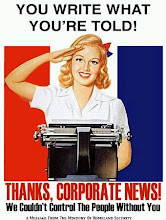The Joys and Pains of Being an Animal
Source: New York Times; By: Dwight Garner
Temple Grandin’s “Animals in Translation: Using the Mysteries of Autism to Decode Animal Behavior” (2004) occupies a special place among the animal books of the last few decades. Ms. Grandin’s autism gives her a special understanding of what animals, whether house cats or cattle, think, feel and — perhaps most important — desire. There is a revelation on almost every page, and Ms. Grandin’s prose (she wrote with Catherine Johnson) is ungainly in the best possible way: blunt, sweet, off-kilter and often quite funny.
Ms. Grandin’s new book, “Animals Make Us Human: Creating the Best Life for Animals,” also written with Ms. Johnson, picks up where “Animals in Translation” left off. It has a slightly different focus: she concentrates this time on the emotional rather than the physical life of animals, although the two are clearly related.
There is a good deal of rehashing of material from her previous book, and she leans more here on the ideas of others than she did before. But to remark that “Animals Make Us Human” is a slightly lesser book than “Animals in Translation” is like saying Randy Newman's “Good Old Boys” is a slightly lesser album than “Sail Away.” If you liked the first one, you’re going to like the second.
Ms. Grandin bases many of her observations in “Animals Make Us Human” on the work of a Washington State University neuroscientist named Jaak Panksepp who identified a series of core “emotion systems” in animals: seeking, play, care and lust (on the positive side) and fear, panic and rage (on the negative).
“The rule is simple,” Ms. Grandin writes. “Don’t stimulate rage, fear and panic if you can help it, and do stimulate seeking and also play.” Ms. Grandin employs Dr. Panksepp’s terms throughout “Animals Make Us Human,” but they are really only a framework for her more interesting riffing and observations.
There are provocative chapters here on dogs (Ms. Grandin quibbles with some of the alpha-male ideas of Cesar Millan, television’s “Dog Whisperer”) and cats. Ms. Grandin is at her best, however, when she is talking about animals like cows, pigs, horses and chickens, as well as wild animals and those in zoos.
Ms. Grandin has designed humane and stress-free slaughter systems that are used now to process about half of all the cattle in the United States and Canada. There is some cognitive dissonance here. She is often asked, she tells us, “How can you care about animals when you design slaughter plants?”
Her reply is that “some people think death is the most terrible thing that can happen to an animal.” She argues that “the most important thing for an animal is the quality of its life.”
She adds: “The more I observe and learn about how dogs are kept today, I am more convinced that many cattle have better lives than some of the pampered pets. Too many dogs are alone all day with no human or dog companions.”
She worries about the “totally adversarial” relationship between animal advocacy groups and the livestock industry. She has kind words for companies like McDonald’s and Wendy’s (she has consulted for both), which are forcing their suppliers to treat animals more humanely. But she also praises activists. “The big companies are like steel, and activists are like heat. Activists soften the steel, and then I can bend it into pretty grillwork and make reforms.”
One of the major points in “Animals Make Us Human” is the importance of hiring and training good people to work with livestock. Strong, caring managers are needed; bullying and sadistic employees should be fired; and because turnover in these industries is high, constant training and retraining are necessary, as well as constant auditing from the outside.
Ms. Grandin is in favor of almost total openness — she’s among the writers who believe that slaughterhouses should have glass walls. “No animal should spend its last conscious moments in a state of terror,” she writes, and any visitor should be able to observe that they do not.
Ms. Grandin loves solid, declarative sentences: “Cattle hate being yelled at”; “Pigs are obsessed with straw”; “Cows like to learn new things.” So I’ll add one of my own: We’re lucky to have Temple Grandin.
But here’s something I thought about while reading “Animals Make Us Human”: while I would not want Ms. Grandin to discontinue her work with animals, even for a day, as a reader I’d be curious to watch her unusual mind play over other topics.
She has already written one very fine memoir, “Thinking in Pictures” (1995). I can envision a second, with a slightly different focus. Human beings can often be made to feel like cattle, especially in large cities. What would she have to say about subways, housing projects, stadiums, prisons, office cubicles, long-distance buses, shelters for the homeless, elevators or, I dunno, the security line at La Guardia? What are her thoughts about urban planning in general?
I’d spend $26 to find out.
http://license.icopyright.net/user/viewContent.act?clipid=197221939&mode=cnc&tag=3.5453%3Ficx_id%3Dbeefmagazine.com%2Fbeef-quality%2F0122-temple-grandin%2Findex.html
Friday, January 23, 2009
Subscribe to:
Post Comments (Atom)












1 comment:
Agree, Temple Grandin is stunning, made me rethink my entire attitude to horses and ponuies, and to a whole load of other stuff. Will get her next book, and any others she writes.
Simon Mulholland
Post a Comment